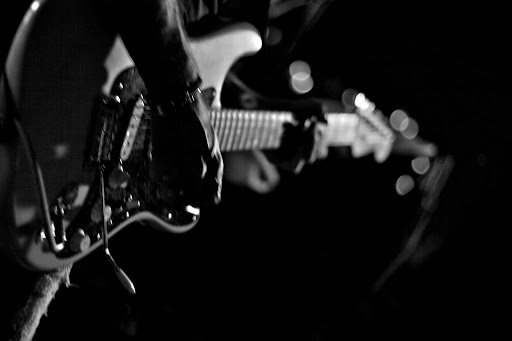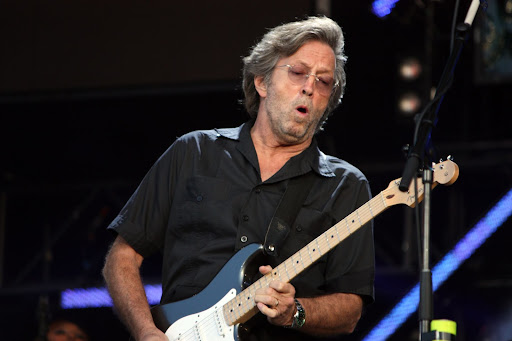There are many blues styles and many blues musicians. While some broader terms like Country Blues refer to a range of musical sounds and styles, others like the New Orleans blues nail down a specific sound, at a particular area and time in history.
It isn’t easy to nail down all the types of Blues music, as there are many sub-genres. But here are 10 readily identifiable types
They are as listed below:
- Country Blues
- Delta Blues
- Chicago Blues
- New Orleans Blues
- Piedmont Blues
- Jump Blues
- Electric Blues
- Memphis Blues
- Piano Blues
- British Blues
The blues sound evolved from year to year and state to state, with each new artist putting their twist on it. From acoustic to electric, rock to pop, guitar to piano, each element left its mark on the blues genre, influencing the quality of sound that came after. Even now we talk about Blues Rock or Blues Rap as the genre evolves to merge with the styles of the time.
In this article we discuss the most distinctive blues styles, the music legends who made them, and how you can tell them apart.
Country Blues

Country Blues is a broad category that’s not easy to identify. Generally, this umbrella term covers all the regional styles of guitar-focused blues. That includes Piedmont, Delta, Texas, Atlanta, and Memphis blues among others.
One of the earliest forms of the vintage blues, Country Blues started in the 1920s and was popular in the rural countryside while urban blues were popular in the cities.
Delta Blues
The Mississippi or Delta Blues type of Blues music is perhaps the earliest of the vintage blues.
With smooth acoustic guitars, fiery slides, and passionate lyrics this soul music can be emotional and moving when played with feeling.
Delta blues phonographs from the 1920s are some of the earliest recordings of Black guitarists who dominated the scene. But the real presence of the Delta Blues was felt on the streets, in clubs and juke joints. This is where legends like Robert Johnson and John Lee Hooker left a permanent mark on blues music.
Chicago Blues
The Chicago or electric type of Blues music is mostly attributed to Muddy Waters, a Delta Blues musician who moved to Chicago and reinterpreted the sound in the early 1960s. Performed with a full band of drums, bass, piano, saxophones, harmonicas, and amplifiers the Chicago style has a full-bodied sound and a heavy backbeat that would later inspire Rock icons like Jimi Hendrix.
New Orleans Blues
Louisiana or New Orleans Blues is an acoustic blues genre. You might be picturing guitarists like Robert Johnson, Charlie Patton, or Skip James sitting, singing with a guitar. These cheerful songs were often set to the tune of saxophones and piano, combining elements of jazz and Caribbean sounds.
Later this Louisiana style developed into the Swamp Blues, incorporating elements of cajun, zydeco, and soul music in the New Orleans blues area. Artists like Earl King, Professor Longhair, and Slim Harpo dominated this genre.
The percussive sound of the Louisiana blues, sets it apart as a looser style than the Chicago sound. You’ll also notice a lot of simple guitar playing, and the characteristic echo that gives this style a swampy effect. Of all the different types of blues music, New Orleans Blues is mostly slow, with easy tempos and soulful vocals.
Piedmont Blues
The Piedmont Blues is a regional subtype of Country Blues. The style was popularised by artists from Georgia, Virginia, Florida, Maryland, Delaware, and the Carolinas. What sets the Piedmont Blues apart is the alternating thumb bass fingerpicking. A combination of ragtime and Country Blues, the sound was used by artists like Etta Baker, Elizabeth Cotton, and Reverend Gary Davis.
Jump Blues
As the world transitioned from the guitar-based vintage styles to the big bands of the 1940s, the Jump blues music helped ease that transition. The up-tempo style was accompanied by a fast rhythm, loud vocals, and a mid-sized band with horns and saxophones.
Electric Blues

If you can play it through an amplifier it’s electric. That includes an electric guitar, harmonica, or keyboard. Electric Blues is also an umbrella term that can include a wide variety of sounds, but for the most part, it includes contemporary artists who are inspired by vintage styles like Chicago, Louisiana, and Texas blues classics.
Of course, other guitarists veer off into the funk and soul genres, but those can also fall under the Electric Blues style.
Memphis Blues
The Memphis Blues type of Blues music was a combination of the Delta and Chicago blues. When musicians like Sonny Boy Williamson , B.B King, and Ike Turner moved to Memphis, their version of the Blues seeped into the area’s existing vaudeville, jazz, and country music scene to create a new popular, urban sound.
Piano Blues
Any types of Blues music that relies on piano as the main instrument falls under this category. That includes ragtime, boogie-woogie, West Coast blues, and other R&B styles. Pianists like Ray Charles, Roosevelt Sykes, and Otis Spann transformed the blues sound, giving it a rhythm that later inspired swing and jazz styles.
British Blues
The early British Blues musicians were just trying to replicate the American sound. However, by the mid-60s contemporary blues musicians like Eric Clapton and the Rolling Stones developed their own style which became Blues infused with Rock.
One important aspect that set the British musicians apart was a genuine attempt to preserve the vintage blues sound, while appealing to the youth of the day who had been weaned on the short simple popular songs of the 1950s.
Final Thoughts
There are many different types of Blues music, and each style brings its own dynamic quality and regional flavour. Where Vintage Blues set the ground for Delta Blues legends like Robert Johnson to transform the genre, the full band of the Chicago Blues paved the way for Rock and Roll.
From the solo singer with an acoustic guitar to the full range of drums, bass, piano, saxophones, harmonicas, and amplifiers the Blues revolutionised music and left a permanent mark on the culture. Heartfelt lyrics and emotional tunes, set to joyous melodies appealed to people across all demographics and age groups.

